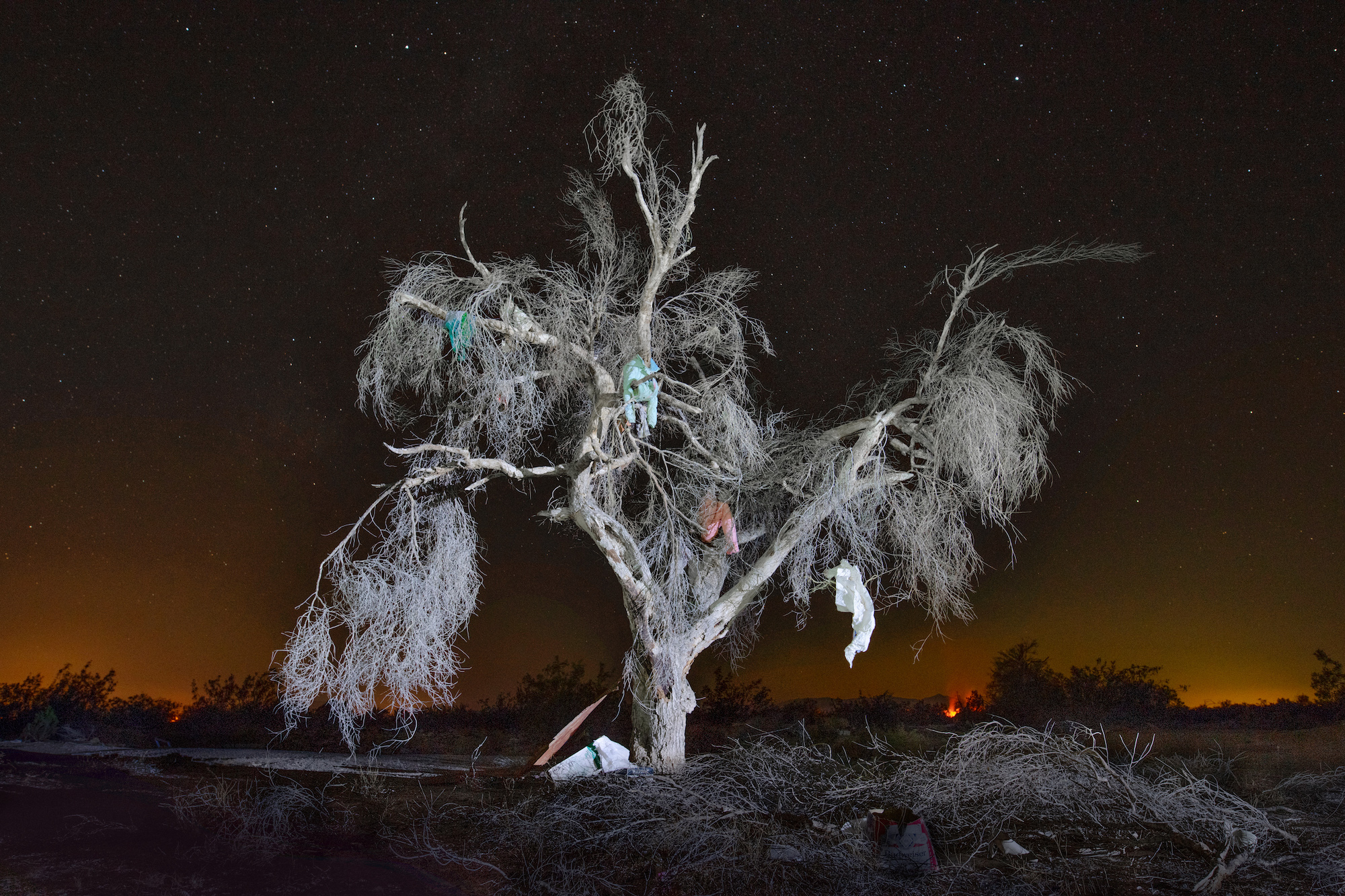
Tree of Life #1
2022
Archival Pigment Ink
36h x 54w inches

Tree of Life #2
2022
Archival Pigment Ink
36h x 54w inches
Over the course of a few years, the photographer Jean-François Bouchard spent approximately six weeks living in a community in the California desert, located at the site of a now-decommissioned military base. During that time, he captured the landscape, tracing the story of its inhabitants through evocative light painting photography.
The 400 to 500 people who live here year-round do so without access to running water, electricity, or waste removal and outside of the jurisdiction of any local government. Their reasons for joining the community vary; some crave freedom, while others have been forced there by economic uncertainty.
“Most of them live in derelict RVs or shanties,” Bouchard says. “For some of them, it is a choice driven by libertarian values or a sense of adventure. But for many, it is the last stop on a long journey into homelessness—-and a stark reminder of the Californian inequalities.”
For residents of the community, the outside world, nicknamed “Babylon,” feels remote—except in the sense that the debris and pollution from the surrounding communities often make their way into the desert.
While the community is wary of journalists and tourists, who might misrepresent their lives, Bouchard says that they welcomed him as an artist. Exile from Babylon, currently exhibiting in New York City, is Bouchard’s portrait of a place that’s been shaped by harsh conditions, desert heat, and limited resources.
While living and sleeping in the community, the photographer found himself watching the trees, their branches dotted with pieces of garbage that had been blown across the landscape. The scene felt post-apocalyptic, representing a larger truth about inequality, loss, and environmental degradation in California and across the country.
“I felt that the trees represented an interesting metaphor about the human condition there and the relationship between the harsh desert nature and inhabitants,” Bouchard tells me. It’s tempting to romanticize a place that exists outside of modern society—and the photographs in the exhibition are beautiful—but they also speak to the painful realities faced by the families forced to live in squatters’ communities.
As the artist explains, the memory of the people he met while living here lingers in the background, even if they aren’t pictured directly. “The presence of kids was very emotional for me,” he says. “I decided against representing them in the photographs, but to me, they nevertheless inhabit this body of work and the memories I will forever keep of this surreal place.”
The eerie atmosphere running throughout the work is the result of light painting photography. “All these images except one were shot with a flashlight bought in a dollar store,” Bouchard admits. While working in this remote community, he made do with what he had. Through long exposures, he was able to capture as much light as possible. At the same time, the technique created a ghostly effect throughout the branches—a sobering reminder of the unseen presence of people throughout the landscape.
Exile from Babylon is on view at Arsenal Contemporary, 214 Bowery, New York City, through March 11th.

Tree of Life #3
2022
Archival Pigment Ink
36h x 54w inches

Tree of Life #4
2022
Archival Pigment Ink
36h x 54w inches

Tree of Life #5
2022
Archival Pigment Ink
36h x 54w inches

Tree of Life #8
2022
Archival Pigment Ink
36h x 54w inches

Tree of Life #9
2022
Archival Pigment Ink
36h x 54w inches

Tree of Life #10
2022
Archival Pigment Ink
36h x 54w inches

All images © Jean-François Bouchard
Further reading:
- Vitor Schietti‘s light painting photography turns trees into living sculptures.
- Ignas Maldziunas uses light painting photography while capturing eerie nighttime scenes.
- Corinna Kern documents a squatters’ community in London.
Discover More
Source link



Leave a Reply